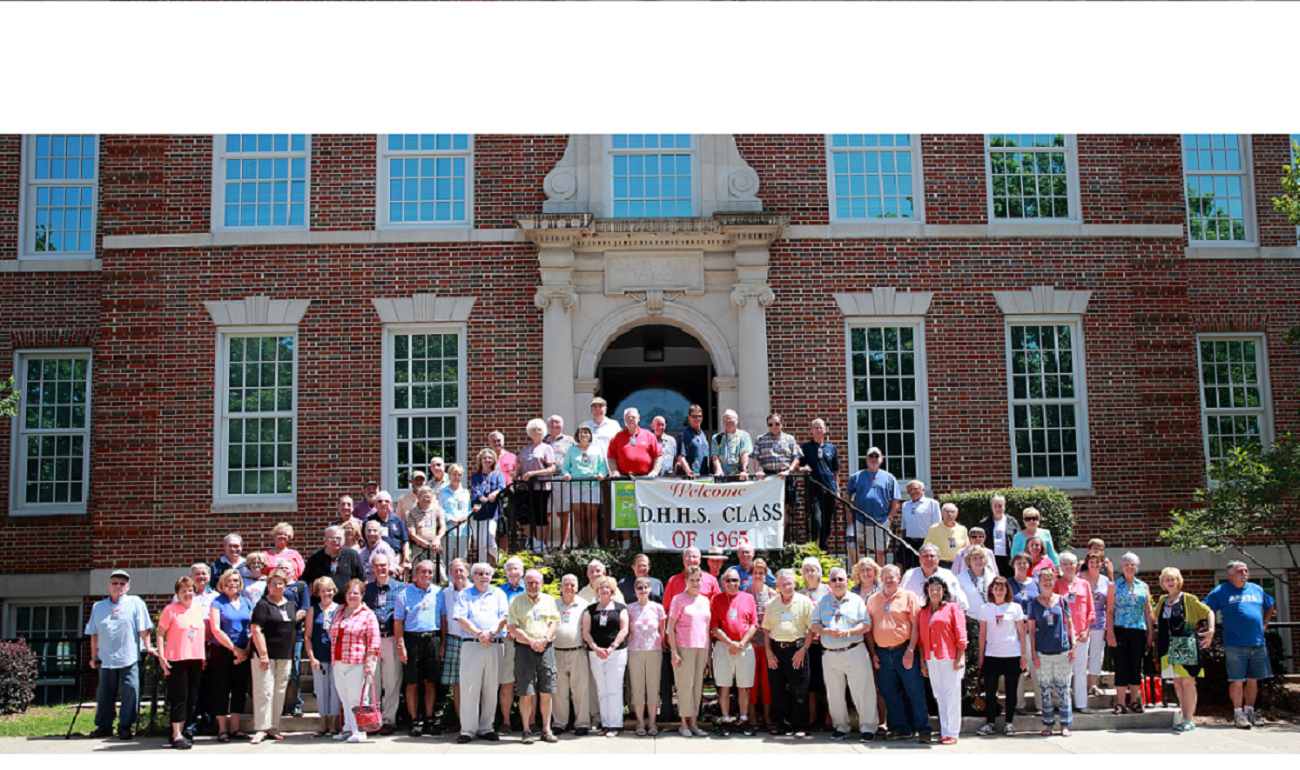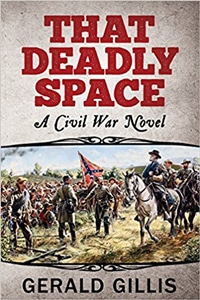This is the tribute I wrote to my Druid Hills High School classmates for our 50th Reunion
To the Druid Hills Class of 1965:
When we became Red Devils at the dawning of the Sixties, little did we know what that tumultuous decade would bring because, literally, little did we know about much of anything. So we arrived in 1960 from among the caravan of yellow buses, braced ourselves, and climbed the front steps, walking between those ionic columns and into the “School of Champions.” We were ready for a new chapter in our lives, ready to start striding toward young adulthood. We were lowly sub-freshmen, mostly nervous and unsure of ourselves, but we were in high school. It made us feel big and small at the same time.
Druid Hills was a larger place, had different smells to it in the main building, even had a marching band. There were over three-hundred of us 8th graders, with lots of pretty girls and big athletic guys and smart people of both genders. The classwork was hard sometimes, but not overly so. The teachers were good and mostly helpful unless of course they were coaches who wanted to be seen as hardasses, with Jimmy Carnes one of the notable exceptions. We soon got our feet underneath us and settled in as we became more comfortable with the place and the pace and the prospects. Before long we could sense that we belonged, that indeed we were going to be okay here.
Pretty soon we were 9th graders, and pretty soon after that we were 10th graders. We were really starting to find our way by then, driving and dating and slipping into one of the various social strata that came either by design or by default. We loved it when Coach Rogers would show up and tell us yet again about Eneas Africanus. We were learning real stuff, about the universe, about conceptual things, about ourselves. And then all of a sudden we were juniors, convinced as we were that we were enlightened, undaunted, and indestructible. We thought of creative pranks, we found the scent of mischief enticing, and we liked the look of the opposite sex a lot. The boys would sometimes settle things at the tennis courts when all else failed. Zesto’s was a famous hangout, not so much for the food but for the swapping of stories—some truthful, some sorta, some not even close. Downtown Atlanta and the Varsity were only minutes away. But who can forget that surreal weekend in November, 1963, when the gunshots in Dallas changed more than a presidency.
Our athletic teams won a few games and our band won all the halftime shows. We were now experiencing the very best teachers like Morgan and Hampton and Davis, tackling the most challenging subjects, and starting to think about what we would do after high school. We were becoming more fashion conscious. We looked around and noticed that we had a lot of talented people in our class, as students, musicians, artists, writers, singers, athletes, dancers, debaters, and emerging leaders. We were only one step away from being seniors—the rulers of the universe that was 1798 Haygood Drive.
And then came our turn, our senior year.
We did good work and had our share of fun in the ’64-’65 class year. Druid Hills was in good hands with our senior class. We had excellent student leaders and after four years of being together we were strongly bonded. We competed hard in the athletic arena and we showcased our previously noted talents in any one of a number of ways. We discovered alcohol, threw a few eggs, and did some things that we later dearly hoped our own kids wouldn’t do. We got a new gymnasium that made us proud. The music of Motown and the British invasion kept us moving to the beat. Many of us were hearing from colleges about our applications—sometimes happily, sometimes not so much. We honored Jack Wilks by dedicating the Saga to him, and we wrote lots of pithy phrases in the yearbooks of our friends and classmates. And before long we were singing “You’ll Never Walk Alone” and rehearsing our graduation exercise, trying not to become overly emotional, but mostly giving in to it, if even a little.
Soon it was all over, and probably for the first time in our lives we had a collection of years that, when looking back, had seemed to pass so very quickly, like the way our parents had told us about the passage of time.
Some of us went to college, some went to work, some went into the military. The times they were a changin’, and the nation was being pulled and stretched out of its post-WWII comfortable shape. The Civil Rights era was mostly civil, but not always. The Vietnam era grew more and more uncivil and seemed to usher in the most bitter and divisive time since the Civil War. Before many of us had reached the age of twenty-one, JFK, RFK and MLK had been felled by assassin’s bullets. The ‘68 Tet Offensive in Vietnam gave the USA a decisive military victory which oddly enough became a public-opinion disaster. We found comfort where we could—sometimes in sex, drugs, rock-‘n-roll, or cheap beer. There were heroes like Neil Armstrong, outsized personalities like Muhammad Ali, criminals like Charles Manson, and traitors like Jane Fonda. Some of our classmates were shooting dope, some were shooting NVA or VC, and some were working at jobs that paid the bills, but not much else. We were just doing our own thing, whatever that meant. We were the Baby Boomers, the sons and daughters of the Greatest Generation, and we would later be described as the most spoiled, self-absorbed generation in American history. I didn’t buy that description then, and I certainly don’t now.
Most of us made it through those challenging times—some more bruised than others, some changed forever. We got married, had kids, maybe got divorced. We went to work, some staying at jobs for years, some bouncing around looking for that elusive greener grass. Some of us went into the medical or legal professions, or became teachers or salesmen or stay-at-home moms. Some of us became entrepreneurs and got rich. Many of us made a decent living and enjoyed a certain degree of comfort, while others struggled with downsizing and rightsizing and all the other euphemisms associated with losing a job. We were scattered about the entire nation, following the twists and turns of fate and the lure of opportunity.
We had class reunions and by twenty years we guys laughed about the weight gains and the hair loss. In some ways it seemed like yesterday when we were at Druid Hills. By thirty years it no longer seemed like yesterday. We were saddened by the classmates and family members we had lost along the way, and much of the social layering that once seemed so important had diminished. By forty years it was gone altogether, most of us happy just to be alive and continent enough to fill in the gaps in our personal histories, including, of course, our most recent surgeries. Our memories of school weren’t quite as robust as before, nor were our knees and backs and hips. But thankfully there were now pharmaceuticals to help us lower things like blood pressure or cholesterol or chronic pain, or conversely to help other anatomical regions rise to the occasion, so to speak.
And now it’s fifty years. We grew up together, we sons and daughters of dear ole DH. And now we’re growing old together. It’s not so bad, really. We’ll miss the departed, to be sure, and we’ll remind one another of the many good times. And we’ll take some consolation in the fact that we’re able to join together once again in the warmth of renewed friendship. We’ll offer a toast or two, make a boast or two, and laugh a lot. A helluva lot.
Those were good years long ago, sweetened even more by the passage of time. Loyal, brave, and fair and true. That was us then, and here we are now. We’ve all had our successes and we’ve all been knocked around by life. But we’re still standing, we’re still friends, and we’re still the Devils that were once dynamite. It could’ve been worse—we could’ve been shipped off to Briarcliff, for cryin’ out loud, and be the bunnies that were once, well, whatever. But no, we were a great class from what was arguably the best school in the best school system in the entire South.
We are the Druid Hills Class of 1965, by God. And by the grace of God, we can enjoy it once again. And enjoy it we shall.
I SALUTE you, my fellow classmates!
And may we meet again on down the road.
Jerry Gillis
DHHS, ‘65





